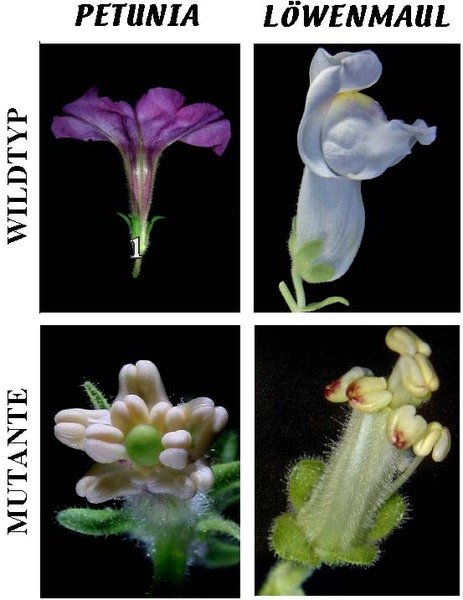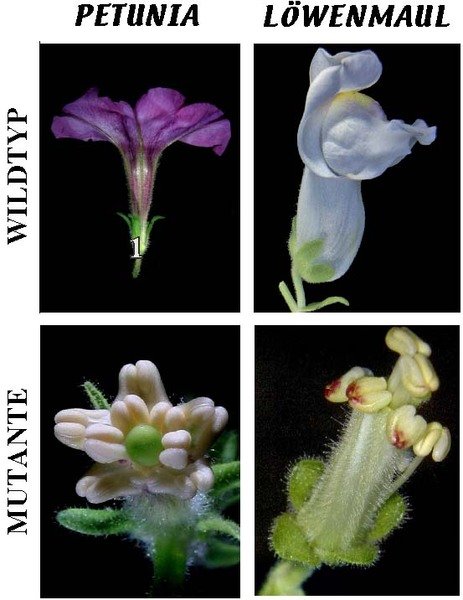A small leak will sink a great ship
New insights into the function of microRNAs in plants: abolishing a microRNA converts petals to stamens
During flowering four different types of floral organs need to be formed: sepals, which protect the inner organs; the frequently ornamental petals; stamens, which produce pollen and the carpels. This process is orchestrated by a large number of genes. Scientists at the Max Planck Institute for Plant Breeding Research in Köln (Germany) found, in cooperation with colleagues in Nijmegen (Netherlands) that a small molecule, a so-called microRNA, is crucial for the control of floral organs identity (Nature Genetics, June 24, 2007).

Flowers of higher plants are built in a similar pattern: their outermost whorl is composed of sepals, which protect the young bud, thereafter comes a whorl of often colorful petals attracting insect pollinators, followed by a whorl of stamens with pollen sacks and the innermost whorl holds carpels, which later give rise to the fruit and seeds. This basic architecture is comparable in higher plants prompting the question after common components of a genetic 'masterplan'.
Scientists in the group of Zsuzsanna Schwarz-Sommer investigated a mutant of snapdragon where stamens form instead of petals (Fig. 1). Interestingly, a strikingly similar mutant occurs in another plant species, in Petunia. 'We already suspected some ten years ago when we first looked at these mutants that in the two species a similar defect might disturb the genetic control resulting in the 'wrong organ at the wrong place' explains Mrs. Schwarz-Sommer. A similar example is well known in the fruit fly where a mutant carries a pair of legs at the head instead of the two antennae.
Indeed, experiments performed by the German and Dutch scientists showed that in the two plant species mutation in the same gene conferred altered identity to the floral organs. This gene turned out to code for a microRNA, a small ribonucleic acid consisting of little more than 20 nucleotides. MicroRNAs can recognize and bind to complementary sequences present in messenger RNAs (mRNA) and prevent thereby translation of the mRNA into a protein: the respective gene falls silent. By this interaction microRNAs can influence whole chains of control events.
Mutations in microRNAs are rare, so this is the first example for the functional similarity of a plant microRNA in two species. Schwarz-Sommer underlines the significance of the work as follows. 'Our novel insights into control mechanisms governing floral organ identity will need to be built into future attempts to model this biological process mathematically.'
The complex control of floral organ identity has been described by the simple ABC model in textbooks. A, B and C are three developmental functions: A alone is responsible for sepals, combined function of A and B results in petals and combined B and C in stamens. The identity of the central carpel is solely controlled by C. The new results are in conflict with an important mechanistic prediction of this model and replace a static spatial control by a temporal dynamic one.
